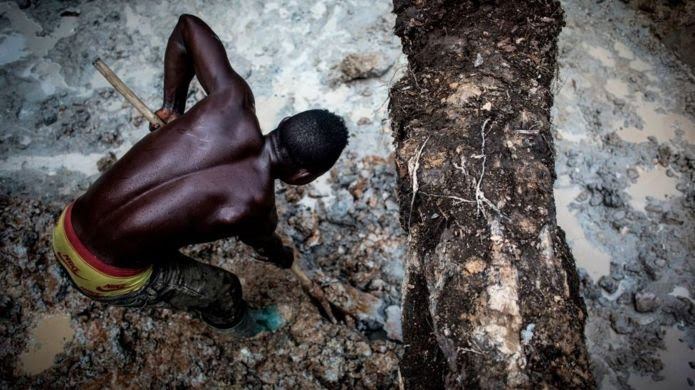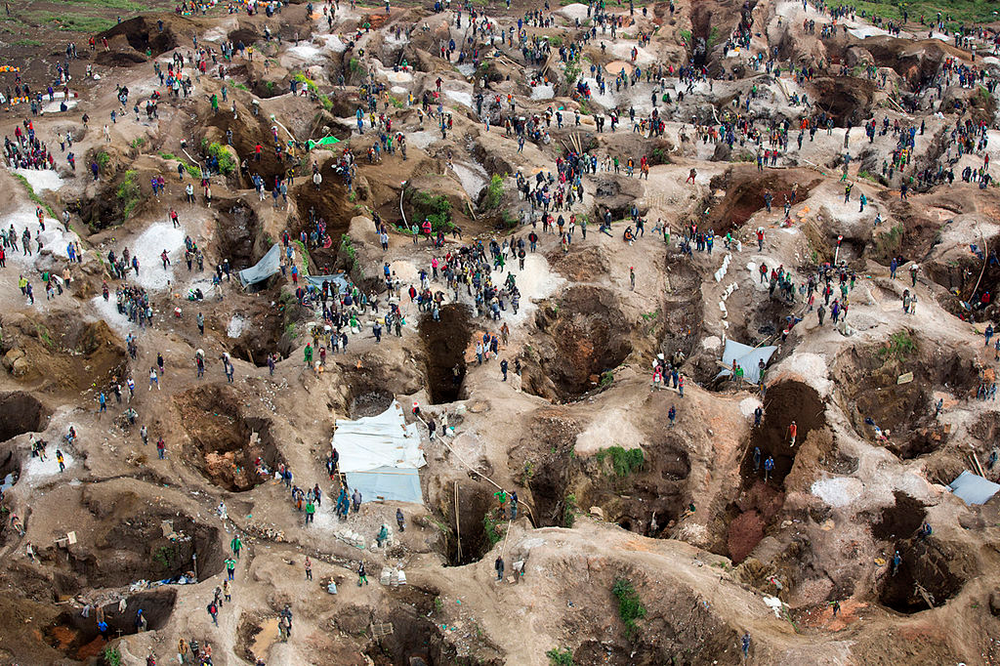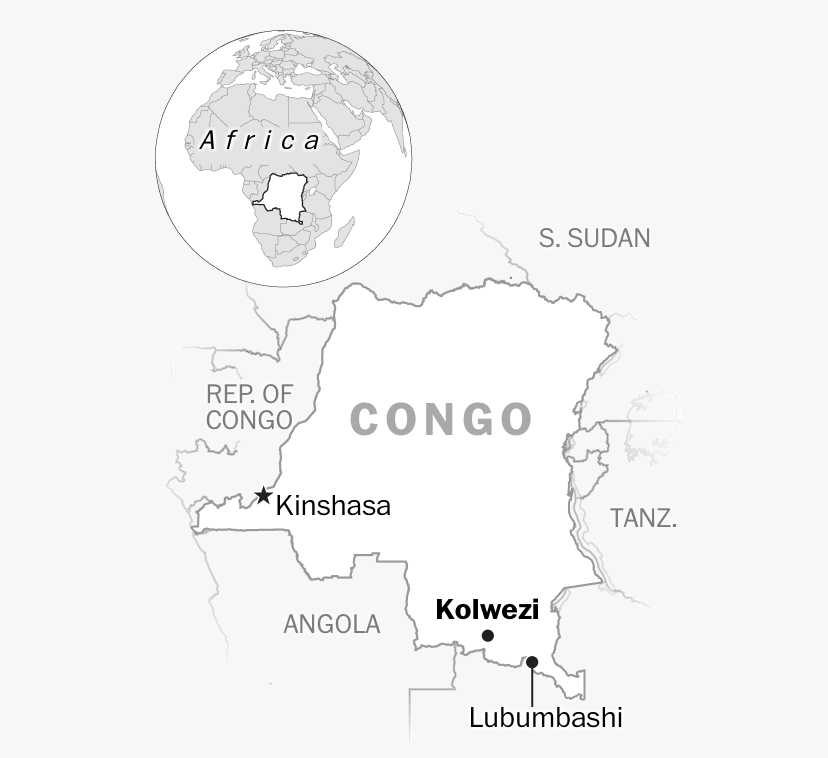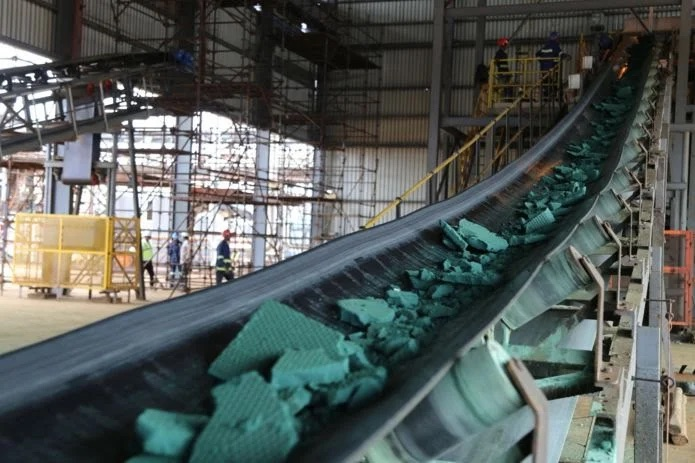When you wake up the first thing you’re probably reaching for is your phone. You may use it to check social media or maybe catch up on emails. Later in the day you may even go so far as to book a flight for a vacation. And all this is made possible by an element most of us don’t even think about: cobalt. Cobalt is found in every lithium-ion rechargeable battery on the planet. From smartphones to tablets, to laptops to electric vehicles it is used to fuel the electronic devices we depend upon daily. It is also used to make jet engines, gas turbines, and magnetic steel. Essentially you cannot check social media, send an email, drive an electric car, or fly to that tropical destination without cobalt. But unfortunately the cobalt used in our products, comes at a heavy price.
The Democratic Republic of Congo is known for housing precious minerals like cobalt as well as gold, diamonds, copper, and oil. Mining is an important land use activity in the forested region of the Congo basin, employing millions of people in the informal sector. In the past few decades, it surpassed timber as the largest economic activity. The major resources that are mined from the region are mostly small scale, artisanal, and unregulated.

Photo: Artisanal mining in DRC (BBC)
However, much of central Africa’s mineral exploitation falls under blood diamonds, or conflict resources. Conflict associated with mining in the eastern Kivu region of DRC led the government to ban export in 2010, but that quickly reversed because of criticism that the ban would exasperate the situation by opening up illegal trade. In 2013, the DRC banned the export of raw concentrate mining materials in an attempt to promote local value, which added processing.
Because of conflict resources, the international community including advocacy groups have established policies to ensure transparency in the mineral trade. After the outcry over trade of blood diamonds, many purchasers created regulations in hopes of preventing conflict diamonds from entering the supply chain. The Kimberly process was created as a certification process by the UN in 2003, but was criticized for its ineffectiveness. It required a government certificate of origin to accompany all rough diamonds if they are being moved in between countries. However, it has proved to be completely ineffective in the DRC. Minerals such as gold are more difficult to track, and the trade in these valuable resources fuel conflict in the region.

Photo: Aerial view of coltan mine in Rubaya, DRC (MONUSCO/Wikimedia Commons)
The DRC’s turbulent history plays a big role in the reason for conflict over its valuable resources. Since the late 1800s, the Congo region has experienced few periods of peace and economic stability. Colonization crippled the future development of the region. In the late 1870’s, King Leopold II of Belgium colonized the Congo territory. King Leopold signed treaties with several tribal rulers in the territory, giving himself sovereignty in their regions. In 1885, the region officially became the Congo Free State ruled by King Leopold. However, since he did not gave enough funds to support his endeavors, he gave Belgium the right to annex the Congo in exchange for funds. King Leopold then declared all unoccupied land owned by the state, initiating the exploitation of the land. This declaration provided him with exclusive rights to the lucrative trade in rubber and ivory. Soon after, private companies were created to exploit the natural mineral wealth of the Congo. Not only was the land exploited, but natives were forced into slave labor, as they were brutally forced to collect rubber and mine for minerals. Under the agreement with King Leopold Belgium annexed Congo in 1908 and under Belgium rule forced labor was gradually phased out.
However, the newly annexed territory was merely an economic investment for the Belgian government. There were hardly any initiatives put in place to promote the economic development of sectors important to the welfare of the native people. Economic developments were directly tied to the exploitation of the land. Railroads and other forms of transportation were developed to increase profits for the Belgian government. Plantations and large mining operations were formed with native people occupying the labor pool. Congo eventually gained its independence from Belgium. Nevertheless, stability in the country would not last. Ethnic and personal boundaries, often encouraged by Belgians, began to disrupt the nation. In 1960, a coup took over the government, largely supported by the United States based on the premise of fighting against the spread of communism. But the United States’ involvement in the DRC was mainly due to its interest in its rich mineral resources.

By the end of the 1960s, the DRC enjoyed moderate political stability, but the seemingly stable government was filled with notoriously corrupt government officials. The most notable was President Mobutu Sese Seko. The revenue that came from diamond mines was meant to go towards public funds, but was instead diverted to the bank accounts of government officials. The DRC’s large diamond reserves are indirectly the major cause of the instability in the region. Having the largest reservoir of industrial diamonds in the world, the DRC has the resources needed to stabilize and strengthen its economy. Sadly the natural resources are at the center of an ongoing battle between the DRC and rebel groups. The country is ranked as one of the largest diamond producers in the world, but also as one of the least developed countries in the world. The illegal exploitation of diamond resources has become the main source of funding for rebels to finance their military efforts. Diamonds are relatively easy to mine and transport, are accessible to all segments of the populations, and they hold their value. Unlike other natural resources like cooper, cobalt, and oil, diamonds can be mined without a large-scale industrial setup or substantial amounts of financial backing.
As the exploitation of DRC’s rich natural resources continue, so does the violation of human rights. In recent years, military operations have taken over mines in the eastern part of the country, rich with coltan and cassiterite used in the production of consumer durables and gadgets sold in the world. But a few months after the operation had started in 2009, there were 112 rapes reported. Between 2006 and 2009 there were an astonishing 2,883 recorded rapes in the Shabunda territory. Civilians were caught in the middle of the military and militia fighting to control the mines. Many jobs in the South Kivu depend on the mining industry, but freelance miners are exposed to predatory militias and the military, who demand a cut from what they dig. Global electronics and metals giants still face the uncomfortable question: Are they inadvertently fueling conflict in eastern DRC? But with mining being the main source of income, radical change is highly likely to be resisted; so many jobs depend on it.

Photo: Cobalt production (AFP/GETTY)
In 2019, top tech firms including Apple, Google, Tesla, and Microsoft, were sued over cobalt mining deaths. The case was filed by the International Rights Advocates on behalf of 14 Congolese families. They accused the companies of knowing that cobalt used in their products could be linked to child labor. The DRC produces 60% of the world’s cobalt but the extraction process has been riddled with concerns of illegal mining, human rights abuses, and corruption. Court papers provided several examples of child miners buried alive or suffering from injuries after tunnel collapse. The families sought compensation from the companies for forced labor, emotional distress, and negligent supervision. The companies responded by expressing commitment to responsibly sourcing materials. Nongovernmental organizations like Amnesty International and Enough have called on companies that produce electronics and electric vehicles to implement traceability initiatives. Some companies have responded with efforts to reduce or even eliminate cobalt, rethinking next-generation batteries for electrics cars, for example. In 2017, Apple decided to stop buying ASM (artisanal small scale mining) cobalt after reports of poor working conditions.
According to the Washington Post, realistic policy solutions for governments and companies, will need to take into account that unsafe ASM working conditions are often a result of miner’s struggle to find open sites. A group of NGOs cautioned against banning ASM cobalt because of the serious consequences it would have on people’s livelihoods.
Powered by WPeMatico


